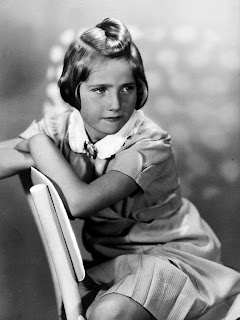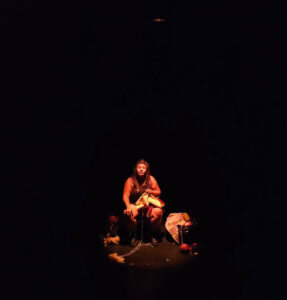l-r: amy lee, clarence sponagle
photo: iden ford photography
When I was little I used to think that a long time ago the whole world used to be in black and white. I would see old photographs and films and I would forget that the sky these people were looking at was the same blue sky sprawling over my head, that the grass was just as green, the sun shone just as brightly and that the world was actually bursting laden with colour even long ago. I always felt a sense of distance from this faraway black and white world, everything seemed greyer and grimmer. It seemed like something as horrific as the Holocaust could not possibly happen in a Technicolor world like mine. Yet, Holocaust education hinges on its ability to connect people with the stories of the individuals whose lives were ravaged by the Nazis and one suitcase which arrived at the Holocaust Education Centre in Tokyo, Japan has spawned an incredible outpouring of worldwide determination to continue to humanize the devastating statistics of how many innocent people were murdered in Eastern Europe between 1939 and 1945. Hana’s Suitcase, playing at Lorraine Kimsa Theatre for Young People until May 21st, 2010, is a play adapted by Emil Sher from the book of the same name by Karen Levine. It tells the story of how this suitcase came to uncover the life of one little girl who is now poised to teach children all over the world the importance of kindness, tolerance and peace.
Based on a true story, Hana’s Suitcase begins in Japan when two children, Maiko and Akira (members of The Small Wings, a club dedicated to promoting peace and tolerance) become fascinated with one particular exhibit on display at the Holocaust Education Centre, a suitcase from the Death Camp Auschwitz, on which is printed the name Hana Brady, her birth date and the word Waisenkind, which means orphan. With the help and support of the Executive Director of the Centre, Fumiko, the children embark on a mission to learn everything they can about this one child. Akira is immediately consumed with a desire to connect to Hana: did she like ice cream, where did she live, what did she do for fun. Maiko is determined to learn how and why a young girl like Hana was sent to Auschwitz and whether she was one of the only 240 children who survived.
The play addresses both Akira and Maiko’s interests by simultaneously focusing on the individuality of Hana and the things that present her as being an ordinary child who loves skating on the pond, skiing with her family and eating candies from her parents’ shop and by placing her within the larger historical context of Hitler’s “Final Solution.” As Fumiko and the children piece Hana’s past together, the play travels back in time to Czechoslovakia, allowing Hana and her brother George to speak for themselves. They have an especially beautiful scene together where they bury a glass bottle full of wishes just before they leave their home, in hopes of returning after the War and digging it up. It is devastating to think of all the wishes and prayers that seemed to fall on deaf ears at this time in history.
The performances in this play each encapsulate a generosity of spirit which stands in striking contrast to the historical events that are described through letters and research. Ginger Ruriko Busch plays Fumiko with kindness and dignity and a beautiful respect for everyone she encounters. Eric Trask is heartbreaking as Karel Brady, a father who wants desperately to allow his children their innocence. Patricia Vanstone is similarly affecting as Marketa Brady, Hana’s strong, brave and loving mother. Zoé Doyle is bright with an ardent zest for knowledge as young Maiko, although she is also often impatient and incredulous with Akira, who she sees as being less astute. Dale Yim as Akira provides some much needed lightness to the play with his relentless questions, exuberant energy and his naive perspective on the information that he is slowly digesting. Clarence Sponagle is charming and delightful as George Brady, a big brother full of hope and heart and Amy Lee as Hana is so winsome and precocious with generosity shining from every pore, you just want to pluck her up, hold her tightly and carry her off somewhere safe where she can get the happily ever after she deserves.
Allen MacInnis’ direction is both evocative and haunting. He has actors in overcoats with stars and caps wearing neutral masks represent the millions of “faceless” Jews who were shipped on freight trains and arrived at the Camps, which creates a disturbing sense of foreboding. He also makes good use of projected photographs, especially those that relate directly to Hana’s story and he also has the familiarly frightening sqreeching of trains on train sound effect as well as the reverberation of the slamming of the heavy door that sealed the fate of so many. There are many moments in this play to give a girl Goosebumps.
As a play, Hana’s Suitcase is a didactic one, but regardless, the emotional component of this play renders it entirely engaging. I find it so incredible that a suitcase that accompanied one child to her death has become the motivation for people from different cities and cultures around the world to work together to uncover Hana’s story. From the children in Japan to the museum workers in the Czech Republic to her brother George Brady who now lives in Toronto, Hana has brought these people together. At the same time, I found Akira and Maiko’s obsession with finding Hana at the exclusion of the other children a bit off putting. It is incredibly sad to look at the projected photographs of Hana Brady as an incredibly adorable and utterly beautiful child. It is gut-wrenching to look at drawings that she made in the Theresienstadt camp of people with suitcases awaiting to board trains. Yet, it is also important to remember the rest of the 1.5 million children who perished at the hands of the Nazis, for they all have stories just as evocative and devastating as Hana’s.
Hana’s Suitcase is a difficult play to listen to because it describes terrible atrocities that most of us, thankfully, are not even able to imagine. Yet, as Akira realizes in the play, despite the fact that it is difficult for us, it is the least we can do in the memory of those lost children, to ensure that we will never forget them. At the same time, George Brady has been quoted as saying that Hana’s Suitcase is, for him, a hopeful play, and I agree. As long as children continue to be passionately horrified and sadden by the unfairness, the cruelty and the injustice that was committed during the Holocaust, they will grow up to have the courage and the strength of character to speak out against intolerance, discrimination and violence. At eleven years old Hana Brady hoped to be a teacher and now, sixty-six years after he death, children from all over the world are flocking to her story and her suitcase, eager to connect and to learn. The theatre has pulled her out of that ominous black and white world so at least her memory can live on in Technicolor.
Hana’s Suitcase plays until May 21st, 2010 at Lorraine Kimsa Theatre for Young People (165 Front Street East). It is considered suitable for children 10 years and older. I would advise informing all children about the subject matter before attending the play, and leaving some time for discussion of its themes and historical contexts afterwards. For more information about the play or to book your tickets please call 415.862.2222 or go online to http://www.lktyp.ca.
hana brady
Alabanza Sweet Hana. I’ll always remember you.
Incoming search terms:
- hana brady








